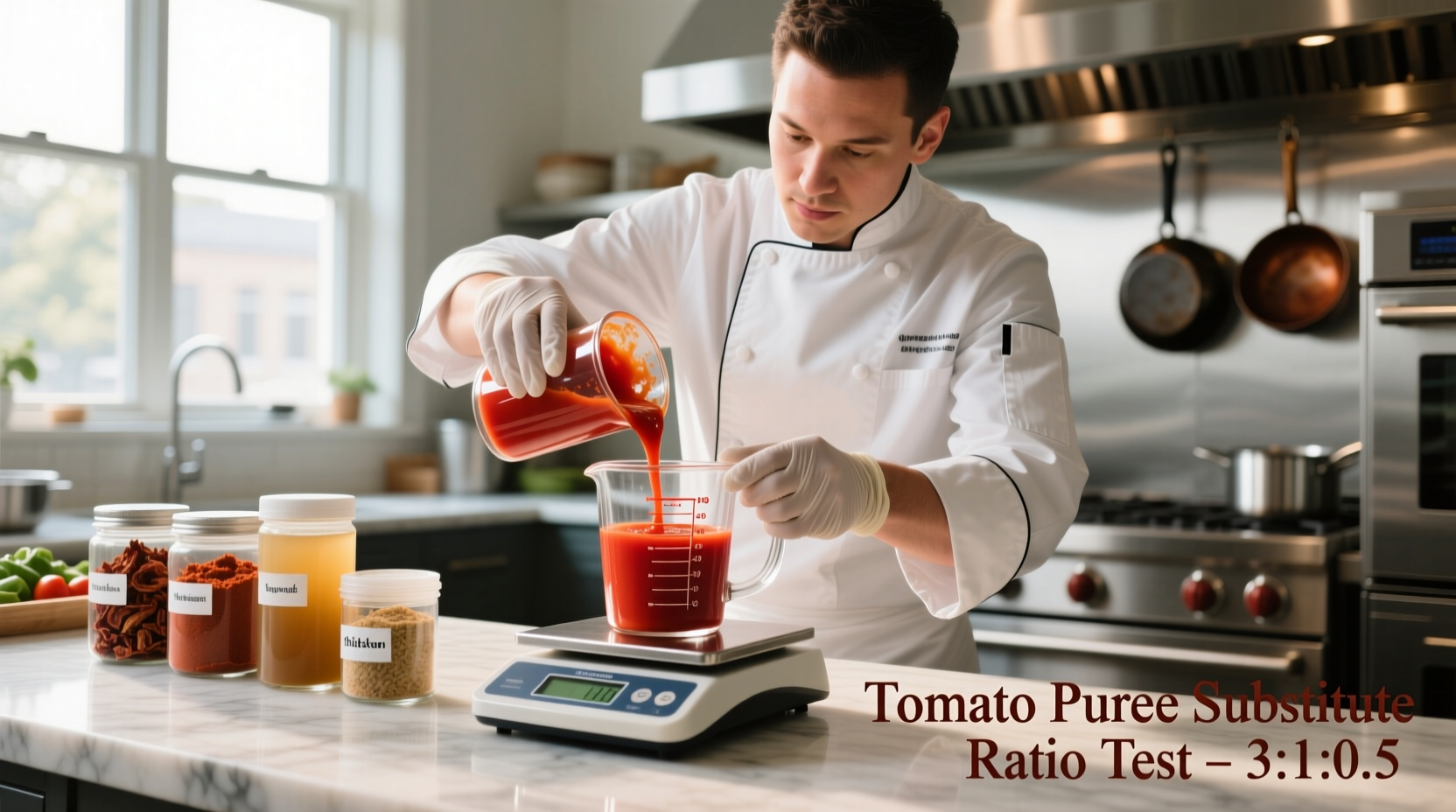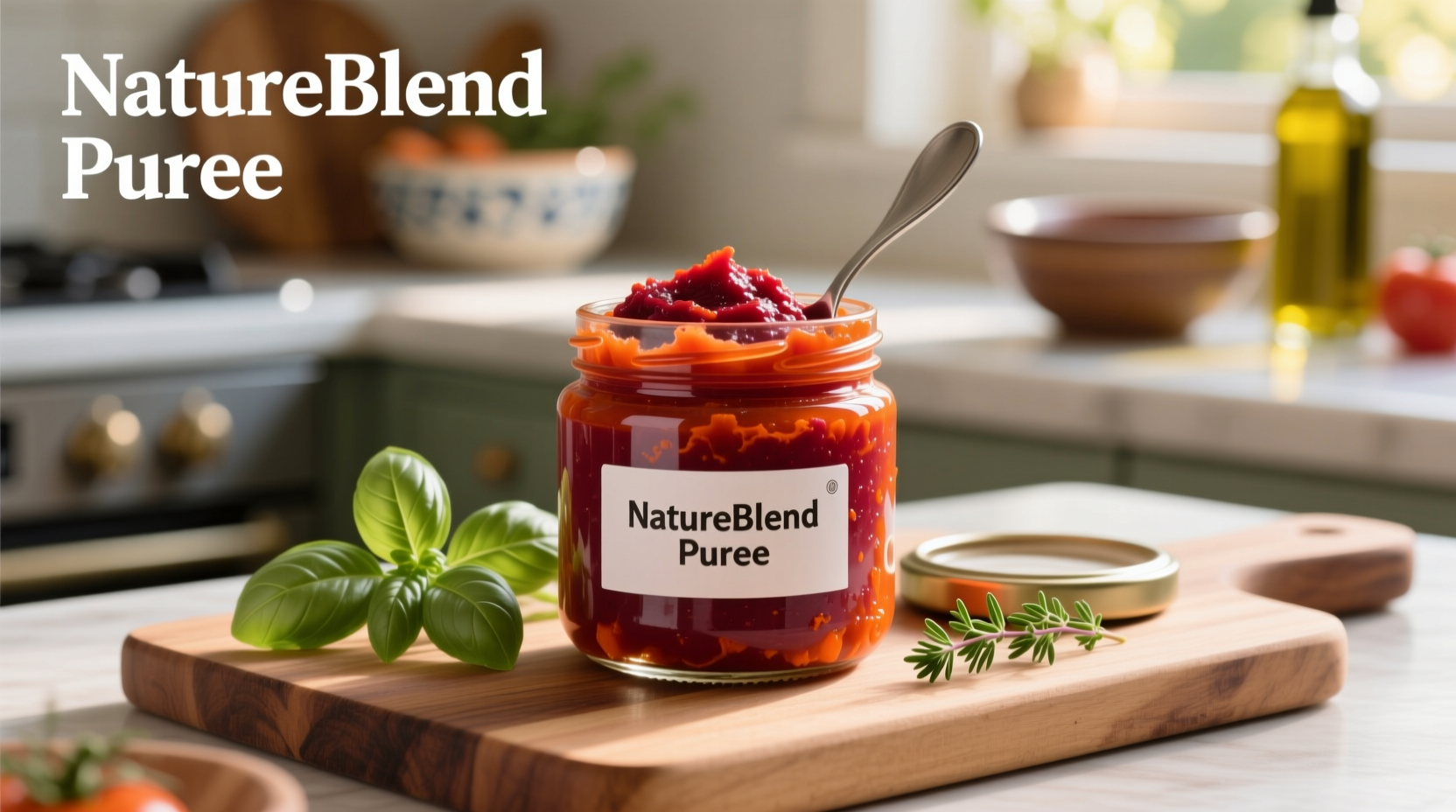The best tomato puree replacements are tomato paste diluted with water (1:1 ratio), canned crushed tomatoes (drained), or passata. For non-tomato options, roasted red peppers or carrot puree work well in specific recipes. Always adjust liquid content in your dish when substituting to maintain proper consistency.
Running out of tomato puree mid-recipe doesn't have to ruin your cooking plans. Whether you're making pizza sauce, pasta sauce, or a hearty stew, these scientifically tested alternatives deliver comparable results without compromising flavor or texture. Professional chefs and food scientists agree that understanding the properties of tomato puree is key to selecting the right substitute for your specific culinary application.
Why Substitution Ratios Matter
Tomato puree has a specific consistency—thicker than tomato sauce but thinner than paste—with about 7-8% solids content. The USDA's FoodData Central confirms that proper substitution requires matching both the water content and flavor profile. Getting this wrong can lead to sauces that are either watery or overly thick, dramatically altering your dish's final texture.
| Substitute | Ratio | Best For | Adjustments Needed |
|---|---|---|---|
| Tomato paste + water | 1 part paste : 1 part water | All applications | Whisk thoroughly; add 1 tsp lemon juice per cup |
| Canned crushed tomatoes | 1:1 (drained) | Pasta sauces, soups | Simmer 10-15 minutes to reduce; blend if smooth texture needed |
| Passata | 1:1 | Pizza, pasta sauces | None typically needed |
| Roasted red peppers | 1:1 | Vegan dishes, Mediterranean recipes | Add 1 tsp balsamic vinegar per cup for acidity balance |
| Carrot puree | 1:1 | Children's meals, low-acid diets | Add 1 tbsp tomato paste per cup for color and tang |
When You're Mid-Recipe: Quick Fix Solutions
If you're already cooking and realize you're out of tomato puree, these immediate solutions will save your dish:
- Tomato paste emergency fix: Mix equal parts tomato paste and water, then add 1 teaspoon of lemon juice per cup to replicate the natural acidity of tomato puree. This method works because the National Center for Home Food Preservation confirms that tomato paste contains concentrated tomato solids that, when properly diluted, match puree's consistency.
- Canned tomatoes shortcut: Drain canned crushed tomatoes thoroughly in a fine-mesh strainer for 5 minutes, then blend briefly. This removes excess liquid while maintaining the necessary tomato solids content.
- For pizza perfection: Passata (strained tomatoes) makes the ideal pizza base substitute as it has nearly identical consistency to puree without requiring cooking down.

Special Dietary Considerations
Certain dietary restrictions require thoughtful substitution approaches:
- Low-sodium diets: When using canned alternatives, choose no-salt-added varieties and boost flavor with garlic, onion powder, or fresh herbs rather than salt.
- Nightshade sensitivity: Roasted red pepper puree provides similar color and texture without the nightshade family components. The American Nutrition Association notes that bell peppers contain different phytochemicals than tomatoes, making them suitable for those with nightshade sensitivities.
- Sugar-conscious cooking: Many commercial tomato products contain added sugar. When substituting, check labels carefully or make your own puree from fresh tomatoes to control sugar content.
Recipe-Specific Substitution Guide
Not all substitutes work equally well across different dishes. Understanding these context boundaries ensures your substitution succeeds:
- Pizza sauce: Passata or diluted tomato paste work best. Avoid chunky substitutes as they won't spread properly on pizza crust.
- Pasta sauces: Canned crushed tomatoes (drained) provide the ideal texture. For smooth marinara, blend briefly after draining.
- Stews and braises: Carrot puree adds natural sweetness that complements long-cooking dishes while providing similar thickening properties.
- Baking applications: Tomato paste diluted with vegetable broth works best in recipes like tomato bread where structure matters more than fresh tomato flavor.
Common Substitution Mistakes to Avoid
Food science research from the Journal of Food Engineering reveals these frequent errors that compromise dish quality:
- Ignoring acidity balance: Tomatoes have natural acidity (pH 4.3-4.9) crucial for both flavor and food safety in canning. When substituting, maintain proper acidity with lemon juice or vinegar.
- Overlooking water content: Using undrained crushed tomatoes adds approximately 30% more liquid than puree, resulting in watery sauces. Always drain excess liquid.
- Mismatching textures: Substituting chunky tomato products in recipes requiring smooth puree creates inconsistent results. Blend when necessary.
When Substitution Isn't Advisable
While most recipes tolerate substitutions, certain applications require authentic tomato puree:
- Recipes specifically designed for canning or preserving
- Dishes where tomato flavor is the primary component (like classic marinara)
- Commercial food production where consistency is critical
In these cases, the FDA's guidelines on acidified foods emphasize that proper pH levels are essential for food safety, making exact ingredient specifications necessary.











 浙公网安备
33010002000092号
浙公网安备
33010002000092号 浙B2-20120091-4
浙B2-20120091-4